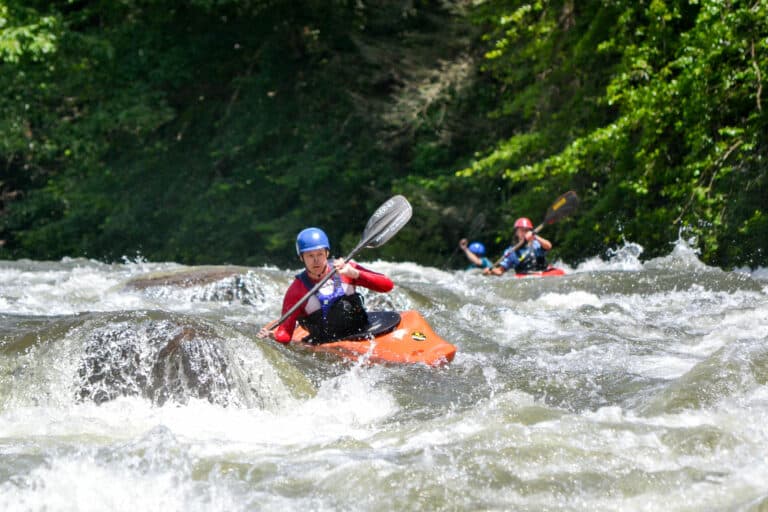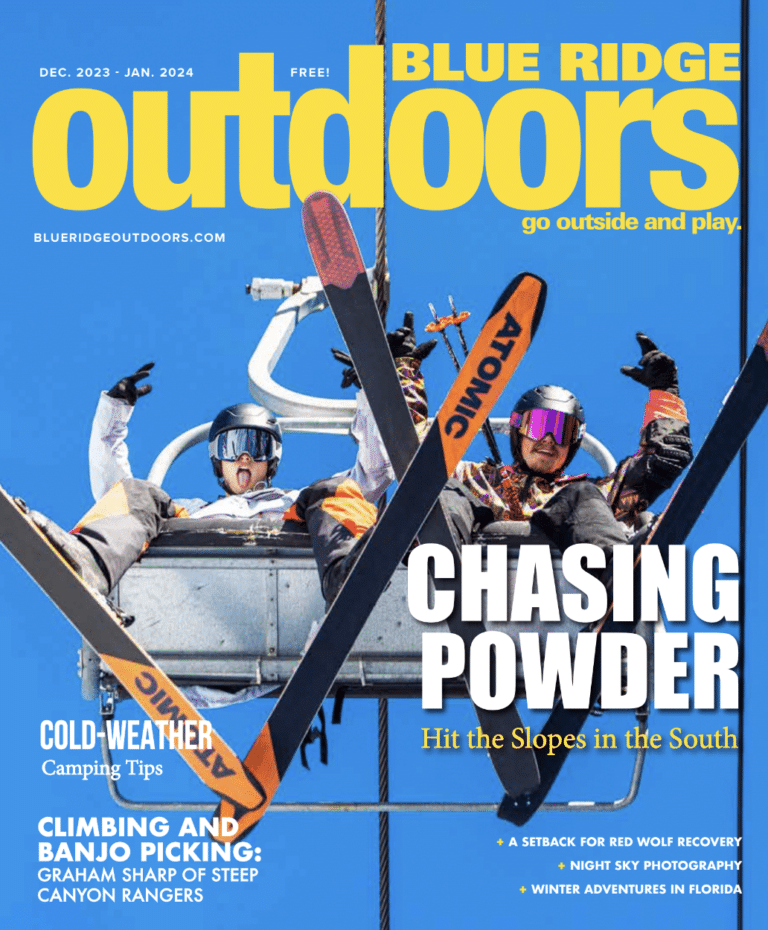 Only 22 years old, Pat Keller has already won the famous Green River Race, designed the ultimate creeking boat for Dagger, run some of the hairiest drops in the South, and made a name for himself as one of the most aggressive expedition kayakers in the country. And he hasn’t even graduated college yet.
Only 22 years old, Pat Keller has already won the famous Green River Race, designed the ultimate creeking boat for Dagger, run some of the hairiest drops in the South, and made a name for himself as one of the most aggressive expedition kayakers in the country. And he hasn’t even graduated college yet.
BRO: You recently paddled the 83-foot La Paz Falls in Costa Rica. What were you thinking as you approached the horizon line?
PK: I wasn’t thinking much. I had to run a 42-footer as the entrance to the big drop, so as I was going over the edge of the smaller waterfall, I could see the horizon line of the 80-footer ahead of me, and beyond that I could see a bridge downriver, 120 feet below. Unfortunately, I thought the 80-foot waterfall I was about to run was only 65 feet. So I lined everything up and rode the spout over the edge, got vertical, and curled up into my tuck, waiting for the impact. I knew how long I should have been in the air, but the 65-foot mark went by and I was still falling. It was like a momentary lapse of reality where I actually thought I was flying. I relaxed a little too much, came out of my tuck and went into the water in an off position, breaking my hand against my helmet.
BRO: Any desire to run drops bigger than 80 feet?
PK: Yeah. Since I was 15, I’ve wanted to get into triple digits, but I’m not in any hurry.
BRO: You’ve paddled all over the world on expeditions. Run anything cool recently?
PK: Over the summer my buddies and I tried to paddle the canyon of the Alsek River in the Yukon at high water. It’s formed by a massive glacier that’s 40 miles long and 12 miles wide. The glacier is moving and creating a swath of destruction in its wake, forcing the river into nearby mountain ranges. We were camping next to the river before we were going to paddle the canyon, and we spent all night listening to the explosions created by the glacier shedding massive icebergs into the river. With all that ice dropping, it ended up not being safe to paddle, so we had to bail.
BRO: What rivers have you been running in the Southeast recently?
PK: With the drought, the only consistent kayaking has been the dam releases on the Green. Honestly, my buddies and I have started mountain biking more. The way you flow downriver in a kayak translates well into mountain biking, so it’s a great cross training exercise.
BRO: What river is at the top of your “to-do” list right now?
PK: The Stikine River in British Columbia. John Muir wrote a bunch about it. It’s one of the deepest, most powerful canyons in the world. The sheer walled gorges make escape impossible, unless you want to free solo climb out. And between those walls are 60 miles of class V water, with big rapid after big rapid.
BRO: Are there still rivers to explore like the Stikine in the Southeast?
PK: There isn’t any big water left to discover, but the thing here is micro-creeking. We wait for decent rain fall, then find some obscure creek in the middle of nowhere with a little bit of water. You can essentially fly down the side of a mountain. We find hidden waterfalls and tight sections of goodness. Timing is everything. You have to catch those micro-creeks at exactly the right moment. Not enough water and you can’t go anywhere; too much water and they’re way too dangerous. It’s a fun gamble with mother nature.
BRO: You must spend a lot of time watching the weather.
PK: Constantly. I watch the weather, the gauges, the Doppler. What I love to see is a massive swath of green and yellow coming out of the gulf and moving toward us through Oklahoma. When I see that, I get excited. It means I’ll be ditching whatever other responsibilities I have coming up. Girlfriend, school, work—they all take a backseat when there’s rain.

Pat Keller’s Guide to Running Big, Steep Waterfalls
You want a little bit of water in your boat, so it sloshes to the bow and weighs the boat forward. This will help keep you from landing flat, which concentrates all the force from the impact up through your spine, breaking your back. You want to go into the water more or less vertical. The trick is to quiet your body as you go over the edge of the drop. The goal is to allow your body to drift through the falls like a piece of driftwood, so it matches the angle of the water. Don’t jerk or throw your body weight. Instead, take a soft stroke while you’re vertical, then slowly and smoothly tuck into the landing position and stay tight through the impact. Ideally, you want to be absorbed into the waterfall, so you’re actually in the middle of the falls and entering the water below with the force of the falls, which breaks the surface and softens the blow. You want to be a part of the waterfall. If you’re too far in front of the falls, you’ll hit the water where it’s calm, and the impact will be much greater, like hitting a solid surface.
Editor’s note: Please do not try this at home. Pat Keller is a professional. You are not.







